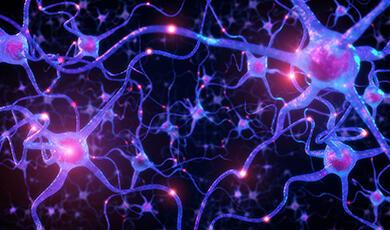Lovesickness
Share
- Details
- Text
- Audio
- Downloads
- Extra Reading
Is love a kind of obsession? Is it a positive or an unhealthy phenomenon? How can we recover from the loss of a partner or deal with the pain of separation and divorce? Healthy and unhealthy modes of conflict resolution will be discussed as well as pathological forms of love, such as erotomania, extreme jealousy, revenge and stalking.
This is a part of Professor Wilson's 2010-2011 series of lectures as Visiting Gresham Professor of Psychiatry. Other lectures in this series include:
Sex Wars
What is this thing called 'love'?
Download Text
Tuesday 3 May 2011
Lovesickness
Professor Glenn Wilson
“I was nauseous and tingly all over. I was either in love or I had smallpox.” (Woody Allen).
The symptoms of love have much in common with mental illness - obsession, mania, depression, sleeplessness, loss of appetite, etc. Italian researchers have shown a serotonin deficit in people describing themselves as “in love” that is comparable to that seen in obsessional-compulsive disorder (Marazziti et al, 1999). Tallis (2005) agues that love is a form of madness devised by evolution to overcome the rational controls that might allow our advanced brains to sabotage reproductive instincts through the exercise of restraint. This is why love echoes mental illness in so many ways and why irrationality is often taken as the measure of love. As Somerset Maugham put it, “love is the dirty trick played on us to achieve continuation of the species”.
Lovesickness was recognised by the ancient physicians as far back as the third century BC. Cases are described in which a patient’s physical illness was traced to concealed love by noting that a faster pulse and other signs of agitation would appear in the presence, or mention of, the love object. Medical historians consider this an early example of psychosomatic medicine and lie detection (Mesulam & Perry, 1973).
If being in love is painful, then how much more so is it when it is unreciprocated or when the relationship breaks up?
Daily Mail writer Mandy Appleyard describes her experience as follows (31/3/11): “My misery following the split took me by surprise. It was intense…In tears and blinded by anxious headaches, I imagined him laughing at my gullibility. My emotional pain became physical, twisting knots in my neck and shoulder muscles that left me in agony. I felt flat, foolish, and tormented by the thought that he had deceived me…I bored friends rigid with a forensic analysis of our relationship and its demise. I even rang a private detective with a view to recruiting his services…”
Rejection in love is a common source of distress. Around 40% of people rejected by a partner experience measurable depression - 12% moderate to severe (Mearns, 1991). Some commit suicide or homicide (Meloy & Fisher, 2005). In a brain-scanning study of men and women recently rejected in love, Fisher et al (2010) found that looking at a picture of the ex-lover evoked a variety of feelings such as love and despair as well as good and bad memories. Brain activation was observed in areas concerned with gains and losses, craving and emotion regulation (e.g. ventral tegmental area, ventral striatum, orbitofrontal cortex and cingulate gyrus). These mesolimbic reward systems and forebrain motivational areas are much the same as those activated in reciprocated love and addiction to substances like cocaine. This may have been because the participants were still “in love” with the partner who had rejected them and keen to win them back.
Kross et al (2011) used brain scans to demonstrate that the agony of unrequited love activates brain regions more usually activated by physical pain, such as a hot probe pressed against their arm. Volunteers reported that breakup thoughts were just as painful as the probe. Apparently, “love hurts” quite literally.
Hurt feelings can lower the heart rate. Moor et al (2010) had volunteers send in photographs of themselves that were supposedly evaluated by others. Their heart-rate was then monitored by ECG while they looked at the faces of others who supposedly liked/disliked them. Heart rate fell in anticipation of feedback, but it fell even more and was slower to return to normal when they were told that the target person disliked them. This was especially so if they had not expected the other person to reject them. Thus, even in this minor form, the experience of heartbreak has measurable effects on our autonomic nervous system. Lowering of HR is an approximation to parasympathetic fainting or shock, an “I give up” response that connects with depression.
Can you die of a broken heart? According to research at St Andrews University, the immense grief of losing a loved one leads to a great many premature deaths. Boyle et al (2011) studied records of 58,000 married couples using data from the Scottish Longitudinal Study and found that 40% of men and 26% of women died within three years of their partner (37 died within 10 days of their partner and 12 on the very same day). These figures are beyond expectation and confirm strong “widowhood effect” for both men and women that is particulary striking within the first six months. Actual causes of death varied: cancer, heart disease, suicide, and “accident” being most common.
Coping with a broken heart is not easy and recovery has parallels to kicking a drug habit. Time will eventually heal but the process can be speeded up. Don’t beat yourself up – you are not blame. There are many reasons why relationships break up so no need to feel guilt. Nor is your ex-partner to blame; recriminations are not helpful either. The keys to positive coping are distraction and rebuilding. Don’t dwell on the past, looking at photos and re-reading old love letters. If you must go to old haunts try to go with someone new, so as to lay down new memories. Use your social support network (friends and family) but don’t drive them away with misery and self-pity. Be as active as possible with sports, hobbies and work projects. Look after your health, keep yourself fit and don’t be afraid to pamper yourself with luxuries like spas and massage (Wilson & McLaughlin, 2001).
Attachment styles predict how disturbed we are by loss of love. A well established classification of attachment styles is that of four quadrants defined by two dimensions: anxiety and avoidance. Anxious types worry that their partner might leave or cease to love them. Avoidance refers to discomfort when others get too close. People low on these two traits are described as “secure”. Although psychoanalysts such as Bowlby supposed that these styles were learned in early relationships with the parents, behaviour genetic studies suggest that close to half the variance is genetic while the rest is largely non-shared environment (Donnelan et al, 2008). In other words, the way we are treated by our parents/care-givers is not very influential in determining our attachment style.
Attachment anxiety connects with high levels of the bonding hormone oxytocin. The researchers who discovered this (Marazziti et al, 2006) note that cause and effect might go either way but they suppose that oxytocin is the effect, being generated as an anxiolytic in order to control excessive anxiety. They suggest that the secretion of oxytocin acts on the amygdala to secure romantic attachment by increasing willingness to accept risk in a relationship.
Attachment style is implicated in pathological love, defined by Sophia et al (2009) as uncontrollable, suffocating caring for the loved one that is recognised by the individual themselves as detrimental to other aspects of life such as family and career. Compared to controls, PL individuals were found to be high in impulsiveness, reward-dependence (addictiveness) and self-transcendence (disassociation/spirituality). They were low in self-esteem, four times less likely to be secure in attachment style and five times more likely to be anxious/ambivalent. Of course, there are other forms of pathological love that are psychotic in that they are not recognised by afflicted individuals themselves.
On average, pet owners are more attached to their pets than their partners (Beck & Madresh, 2008). This is not necessarily pathological. Pets emit infant (cuteness) signals that evoke parental instincts, hence they function as surrogate children. They don’t answer back, don’t grow up and don’t leave home. Studies show that contact with pets reduces stress (e.g. lowers blood pressure) and they may counteract the widowhood effect, increasing life expectation in elderly people. It has also been suggested that kindness to animals may be a way of displaying parental quality to a potential partner. “Dismissing” males show lower pet attachment than secure or fearful men.
Jealousy is the emotion felt when one feels threatened by a rival. It is normal unless taken to extreme. It is beneficial if it increases positive mate retention behaviours such as care and attention to our partner, but can also be destructive, even lethal. Both men and women experience jealousy but it takes different forms. For men it focuses on sexual infidelity; for women threats to the relationship are more sensitive (Buss, 1999). There are variations within gender as well. Those with secure (non-anxious, non-avoidant) attachment styles find emotional betrayal more upsetting than sexual infidelity, while those with a dismissing style, who prize autonomy in relationships over commitment, are more fixated on sex (Levy & Kelly, 2009). Secure attachment therefore lessens the kind of jealousy that leads to domestic violence.
Since jealousy has evolved to alert us threats to a relationship, mate value traits in ourselves and the perceived rival will affect the amount of jealousy we feel. Women’s jealousy is increased if the rival is physically attractive. Masaar & Buunk (2010) exposed female subjects to subliminally presented images of women varying in attractiveness. Those primed with attractive faces expressed higher levels of jealousy. The male equivalent is probably dominance/status. Brewer & Riley (2009) showed that tall men were inclined to be less jealous than short men, presumably because they were more secure in their relationship. However, this did not make the short men more aggressive toward rivals. Rather than risk retaliation, they increased the love and attention toward their partner.
Something similar has been observed in connection with masculinity/femininity of finger ratios. Men with a high 2D:4D digit ratio (indicating lower prenatal testosterone) react more jealously toward socially dominant rivals (Park et al, 2008). However, they are less likely to threaten them or behave aggressively toward their partner (Cousins et al, 2009).
Cobey et al (2010) found that women taking contraceptive pills high in synthetic oestrogens scored higher on a self-report measure of jealousy. This could affect their capacity to maintain stable pair-bonds. Progesterone levels did not seem to affect jealousy. (Note that the pill works by suppressing natural hormones, hence effects are paradoxical. This is presumably why women on oral contraceptives pill are less responsive to masculinity in male faces).
Jealousy is most likely to lead to violence when man’s self-esteem is threatened, e.g., when he has lost his job and cannot support his partner or she has left him. A study of 1,156 women killed in New York found that nearly half were killed by husbands or boyfriends, either current or former, with the majority occurring among the poor and unemployed (Belluck, 1997). Wives who have left their husbands are at substantially greater risk of violence. Spousal homicides often follow from threats from a husband that he will pursue and kill his wife if she ever leaves him (Wilson & Daly, 1996). It is common for her to be denounced as “whore” for having gone with another man.
Stalking refers to obsessive, unwanted following, watching, communication, gift-giving and harassment of another person. It may occur for a variety of reasons: to reverse a rejection (e.g. after separation or divorce), to exercise control over the victim, to gain revenge by frightening or distressing them, to force a relationship with a fantasised “soul-mate”, sometimes a celebrity the stalker has not even met (incompetent or delusional courtship), or to plan a sexual assault (Mullen et al, 1999).
Despite the publicity given to extreme cases (e.g., the killing of John Lennon and actress Rebecca Schaeffer), murder by celebrity stalkers is rare. Overall, there is little relationship between threatening behaviour and actual violence (McCann, 1998). Stalkers often have no hostile feelings toward the victim - just an unrealistic longing for them. They may be psychotic, obsessional or suffer from personality disorders (e.g. anti-social, dependent, narcissistic or paranoid). In the UK there is no specific offense of stalking; it is covered under laws of harassment and telecommunications and these are sometimes misused to deal with domestic and neighbour disputes.
Stalking by an ex-partner is the most common and dangerous form. Around 70% of stalkers are known by their victims and 40% are former intimates (Stieger et al, 2008). Most partner stalkers are “controlling” males, regardless of gender of their victim. They can be particularly intrusive because they know the movements, friends and relatives of the victim. Some use children as an additional tool of intimidation. In around 20% of cases, stalking begins while the relationship is intact but is dangerously escalated after separation. Since the prior relationship is usually abusive, involving coercive control, physical and sexual assault, the stalking may be considered “business as usual” (Logan & Walker, 2009). It lasts 2 years on average, causing great distress to the victim, such as anxiety and depression. Unpredictability further increases stress, as do threats of violence. Actual violence occurs in about 50% of cases, which is higher than with non-partner stalking.
McFarlane et al (2002) studied the particular stalking behaviours that predicted the attempted or actual murder of a woman by an intimate in the U.S. Around two-thirds had been stalked and a similar proportion assaulted in the year preceding the significant attack. Those who had been spied on or followed were twice as likely as other abused women to be victims of murder/attempted murder and threats to harm the children if the woman left (or failed to return) were associated with a nine-fold risk of serious attack. Hence, while threats to the wife are predictive of violence, threats to the children are even more so.
De Clerambault’s syndrome (identified by the French psychiatrist of that name in 1921) is the delusion that one is loved by another person who is somehow prevented from declaring themselves. Also called “erotomania”, it occurs most commonly in middle-aged women who believe that a high-status male, who is known to them (e.g.. their doctor or lawyer, or a celebrity), is secretly in love with them. They imagine that he is leaving little clues to signal his interest (e.g., significant glances or subtle signs like wearing a tie in their favourite colour) or contacting them through telepathy or the media. They return the perceived attention with letters, gifts, phone calls and visits. If these are rejected by the “secret admirer” it is dismissed as a ploy to conceal their forbidden love and there may be escalation in the pursuit. Erotomaniacs occasionally become dangerous if they believe that only the man’s wife is standing between them and a serious relationship.
Brune (2001) argues that erotomania is a pathological variant of the evolved female mating strategy, which favours long-term relationships with high-status males. It is likely to become more of an imperative as menopause approaches (the mean age of onset for women erotomaniacs is 34).
Again, the publicity given to extreme cases distorts the picture. Erotomania is a rare condition. Most are not dangerous and their delusions respond fairly well to low-dose anti-psychotic medication (Kennedy et al, 2002). Strong family histories of related psychotic conditions suggest that genetic factors are involved. Some cases are not totally delusional: they may begin with an episode of casual sex after which the woman perseverates (c.f., the films Fatal Attraction, and Play Misty for Me).
Although typically a female condition, male erotomania also occurs and homosexual cases, both male and female, have been recorded. In fact, erotomania in males is probably more dangerous, especially when there are multiple “love” objects and a history of antisocial behaviour unrelated to the delusions (Menzies et al, 1995). John Hinckley, who shot President Reagan, was apparently trying to impress Jodie Foster, with whom he was obsessed after seeing the film Taxi Driver.
Love may be a “many-spendoured thing” but it is clearly not without its pitfalls. The condition itself echoes many aspects of mental illness and its key feature, loss of control, may be an evolutionary device to provoke the risky behaviours needed to overcome inhibitions against mating. The loss of a loved one, whether in the full flight of passion or the companionate years that follow is obviously extremely painful, with potentially life-threatening repercussions. Jealousy is a natural emotion that can promote positive mate-retention behaviours or unleash destructive, even murderous impulses. Stalking and erotomania are exaggerated forms of male and female-typical behaviour that occur when psychiatric disorders such an obsessionality, anti-social personality and delusions are added to the mix of loneliness and deficient self-esteem. Overall, the agony of love is every bit as intense as the ecstasy.
References
Beck, L. & Madresh, E.A. (2008) Romantic partners and four-legged friends: An extension of attachment theory to relationships with pets. Anthrozoos, 21, 43-46.
Belluck, P. (1997) A woman’s killer is likely to be her partner, a study finds. New York Times.
Boyle, P. (2010) Does widowhood increase mortality risk? Testing for selection effects by comparing causes of spousal death. Epidemiology, 22, 1-5.
Brewer, G. & Riley, C. (2009) Height, relationship satisfaction, jealousy and mate retention. Evolutionary Psychology, 7, 477-489.
Brune, M. (2001) De Clerambault's syndrome (erotomania) in an evolutionary perspective. Evolution and Human Behaviour, 22, 409-415.
Buss, D.M. (1999) Evolutionary Psychology: The New Science of the Mind Boston; Allyn & Bacon.
Cobey, K.D. et al (2010) Hormonal birth control use and relationship jealousy: Evidence for estrogen dosage effects. Personality and Individual Differences, doi: 10,1016/j.paid.2010.09.012 (online publication).
Cousins, A.J., Fugere, M.A. & Franklin, M. (2009) Digit-ratio (2D:4D), mate guarding and physical aggression in dating couples. Personality and Individual Differences, 46, 709-713.
Donnelan, M.B. et al (2008) Genes, personality and attachment in adults: A multivariate behavioural genetic analysis. Personality and Social Psychology Research Bulletin, 34, 3-16.
Fisher, H.E., et al (2010) Reward, addiction, and emotion regulation systems associated with rejection in love. Journal of Neurophysiology, 104, 51-60.
Kennedy, N. et al (2002) Erotomania revisited: Clinical course and treatment. Comprehensive Psychiatry, 43, 1-6.
Kross, E., et al (2010) Social rejection shares somatosensory representations with physical pain. Proceedings of the National Academy of Sciences, 10, 1073.
Levy, K. & Kelly, K. (2009) Sex differences in jealousy: A contribution from attachment theory. Psychological Science, DOI 10.1177 (online publication).
Logan, T.K. & Walker, R. (2009) Partner stalking: Psychological dominance or “business as usual”? Trauma, Violence & Abuse, 10, 247-270.
McCann, J.T. (1998) Subtypes of stalking (obsessional following) in adolescents. Journal of Adolescence, 21, 667-675.
Marazziti, D. et al (1999) Alteration of the platelet serotonic transporter in romantic love. Psychological Medicine, 29, 741-745.
Marazziti, D. et al (2006) A relationship between oxytocin and anxiety in romantic attachment. Clinical Practice and Epidemiology in Mental Health, 2, 1-6.
Massar, K. & Buunk, A.P. (2010) Judging a book by its cover: Jealousy after subliminal priming with attractive and unattractive faces. Personality and Individual Differences, 49, 634-638.
Mearns, J. (1991) Coping with a breakup: negative mood regulation expectancies and depression following the end of a romantic relationship. Journal of Personality and Social Psychology, 60, 327-334.
Meloy, J.R. & Fisher, H. (2005) Some thoughts on the neurobiology of stalking. Journal of Forensic Psychology, 50, 1472-1480.
Menzies, R.P.D. et al (1995) Prediction of dangerous behaviour in male erotomania. British Journal of Psychiatry, 166, 529-536.
Mesulam, M. & Perry, J. (1972) The diagnosis of love-sickness: Experimental psychophysiology without the polygraph. Psychophysiology, 9, 546-551.
Moor, B.G., Crone, E.A. & van der Molen, M.W (2010) The heartbrake of social rejection: Heartrate deceleration in response to unexpected peer rejection.
Psychological Science, 9, 1326-1333.
Mullen, P.E. et al (1999) A study of stalkers. American Journal of Psychiatry, 156, 1244-1249.
Park, J.H., et al (2008) Sex-specific relationship between digit-ratio (2D:4D) and romantic jealousy. Personality and Individual Differences, 44, 1039-1045.
Sophia, E.C. et al (2009) Pathological love: Impulsivity, personality and romantic relationship. CNS Spectr., 14, 268-274.
Stieger, S. et al (2008) Lifetime prevalence and impact of stalking: Epidemiological data from Eastern Austria. European Journal of Psychiatry, 22, 235-241.
Tallis, F. (2005) Crazy for you. The Psychologist, 18, 72-74.
Wilson, G.D. & McLaughlin, C. (2001) The Science of Love, Vison Paperbacks, London.
Wilson, M. & Daly, M. (1996) Male sexual proprietariness and violence against wives. Current Directions in Psychological Sciences, 5, 2-7
©Professor Glenn Wilson, Gresham College 2011
This event was on Tue, 03 May 2011
Support Gresham
Gresham College has offered an outstanding education to the public free of charge for over 400 years. Today, Gresham College plays an important role in fostering a love of learning and a greater understanding of ourselves and the world around us. Your donation will help to widen our reach and to broaden our audience, allowing more people to benefit from a high-quality education from some of the brightest minds.


 Login
Login







